Giverny – Garten von Claude Monet
Claude Monet mietete das Haus im Jahr 1883 und legte einen farbenfrohen Ziergarten mit vielen verschiedenen Blumen an. Später erwarb er das Haus und ein weiteres Grundstück, das sich hinter der jenseits dieses Gartens verlaufenden Straße befindet. Dort entstand in den folgenden Jahren der sogenannte jardin d’eau oder Wassergarten mit dem von einer Brücke nach japanischem Vorbild überspannten Seerosenteich, der Monet sehr häufig als Motiv diente.
Sarreguemines
Sarreguemines is a commune in the Moselle department in Lorraine in north-eastern France. It was transferred to Germany in 1871, with the Treaty of Frankfurt following the Franco-Prussian War. From 1871 to 1918 it formed part of the German imperial province of Alsace-Lorraine and manufactured plush velvet, leather, porcelain, and earthenware, and was a chief depot for papier-mâché boxes, mostly used for snuffboxes. It was returned to France after World War I [source: Wikipedia].
Sarreguemines is famous for their old faience or faïence, where fine tin-glazed pottery on a delicate pale buff earthenware body was produced for decades. The old pottery is open for the public and the museum shows the different steps and the history of the pottery. The former factory buildings are a part of a roomy garden, which is affiliated to the Jardín pour la Paíx/Garden for Peace/Gärten ohne Grenzen.
The ceramic museum, near the town hall, houses a beautiful winter garden with colourful ceramic wall tiles.
Mushrooms
Fly agaric – Fliegenpilz (Amanita muscaria) is generally considered poisonous, deaths from its consumption are extremely rare, and it is eaten as a food in parts of Europe, Asia, and North America after parboiling. The name of the mushroom in many European languages is thought to be derived from its use as an insecticide, when sprinkled in milk. The red-and-white spotted toadstool is a common image in many aspects of popular culture, especially in children’s books, film, garden ornaments and greeting cards.
Pear-shaped puffball – Birnenstäubling (Lycoperdon pyriforme) is a saprobic fungus and is present throughout much of the world. Emerging in autumn, this puffball is common and abundant on decaying logs of both deciduous and coniferous wood. It is considered a choice edible when still immature and the inner flesh is white.
Verdigris agaric – Grünspan Träuschling (Stropharia aeruginosa) is a medium-sized green, slimy woodland mushroom, found on lawns, mulch and woodland from spring to autumn.
Spiny puffball – Igelstäubling (Lycoperdon echinatum) has been found in Africa, Europe, Central America, and North America, where it grows on soil in deciduous woods, glades, and pastures.
Magpie Fungus – Spechttintling (Coprinopsis picacea) was first described in 1785 by French mycologist Jean Baptiste François Pierre Bulliard.
Fern and clover
Day 2 – 02.08.2011 – Oban – Port Appin – Glencoe – Gualachulain (99km)
Have Fun!
It’s spring time! :-)
It is spring time and flowers are everywhere…
Crocus are one of the first flowers to bloom in spring and are very popular for gardens and parks. Crocus flowers and and their leaves are protected from frost by a waxy cuticle, so it’s common to see early-flowering crocus blooming through the last spring snowfall.
Duthie Park, Aberdeen
Duthie Park is situated in Ferryhill, Aberdeen (Scotland), by the banks of the River Dee. The land was gifted to the council by Lady Elizabeth Duthie of Ruthrieston in the year 1881. Her idea was to create a memory for her uncle and her brother.
The winter gardens are the home for the second largest collections of bromeliads and of giant cacti respectively in Great Britain.
